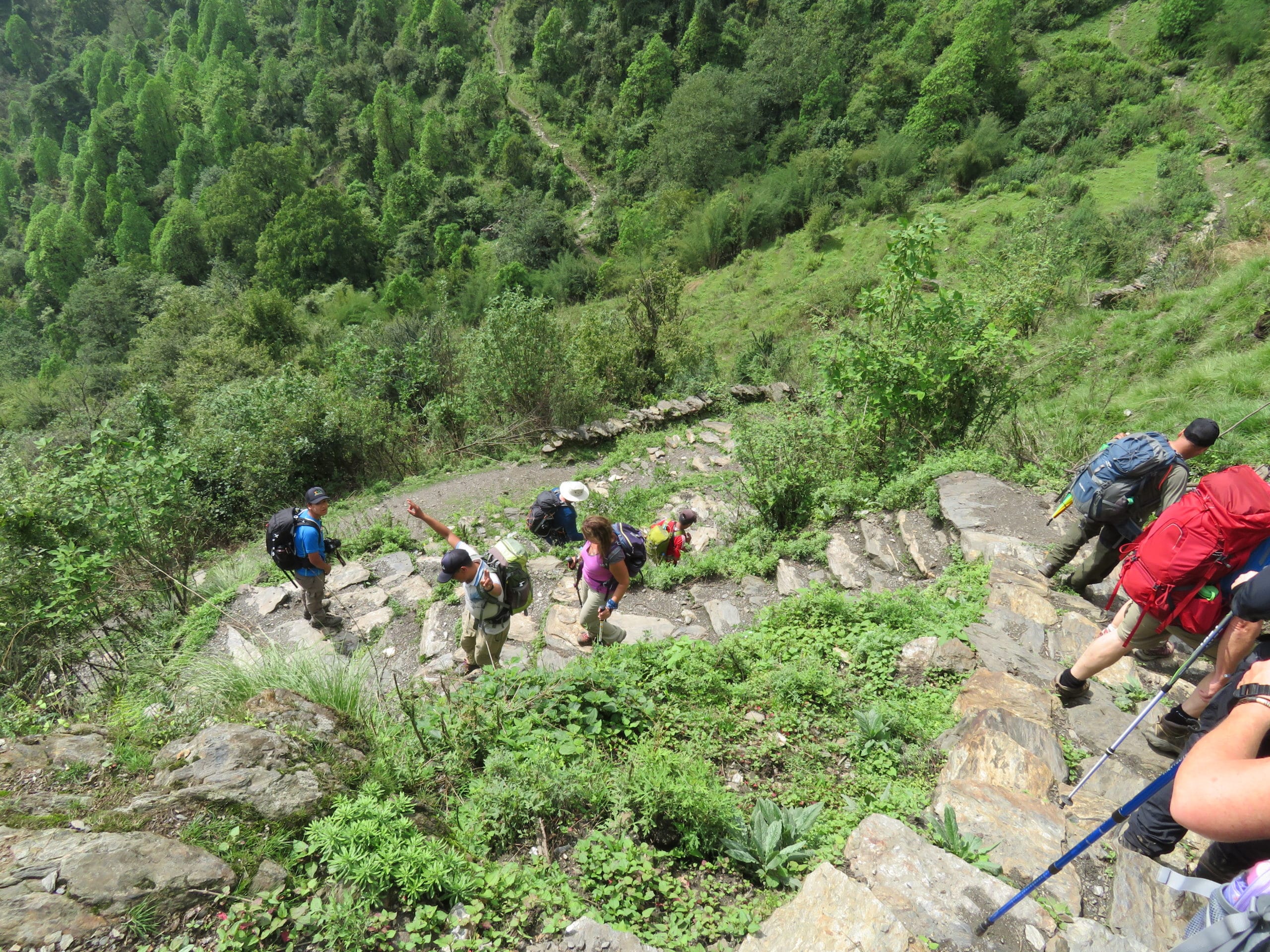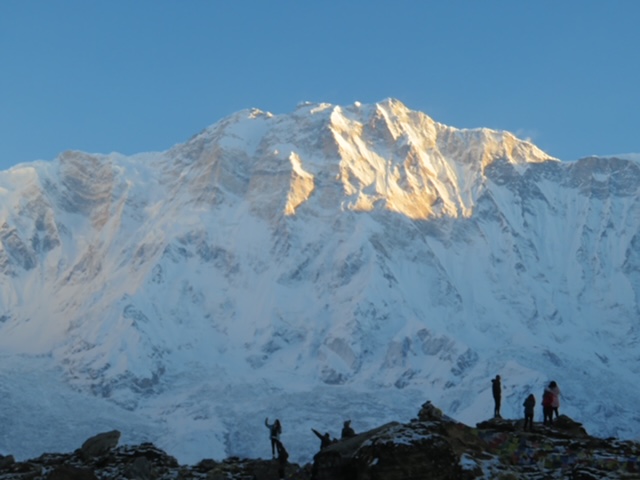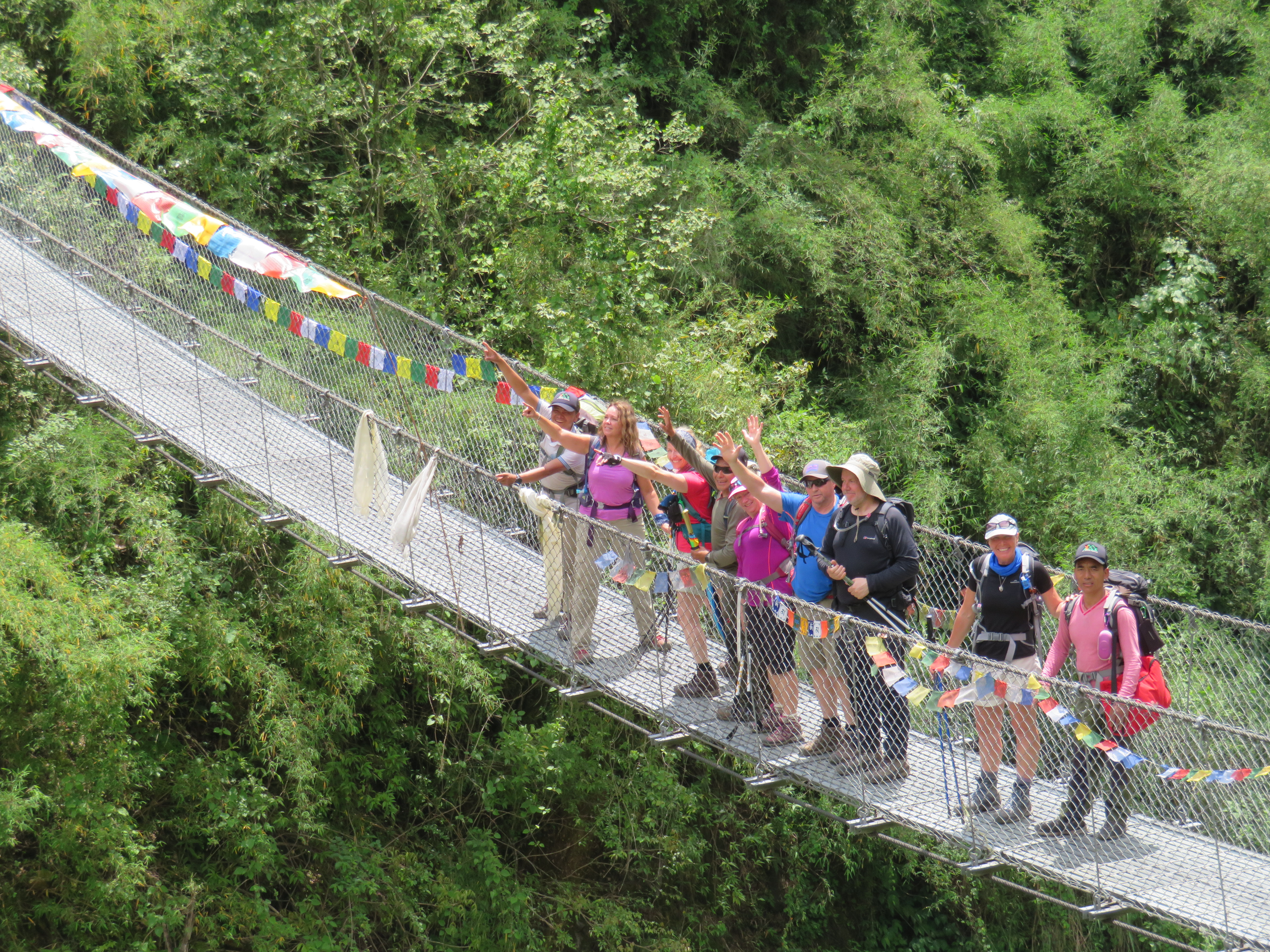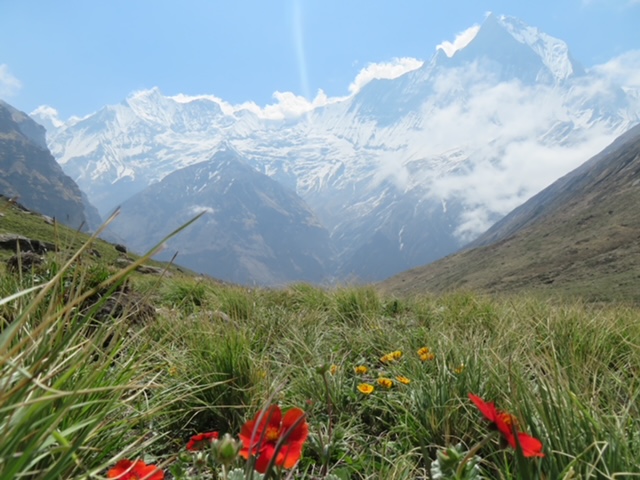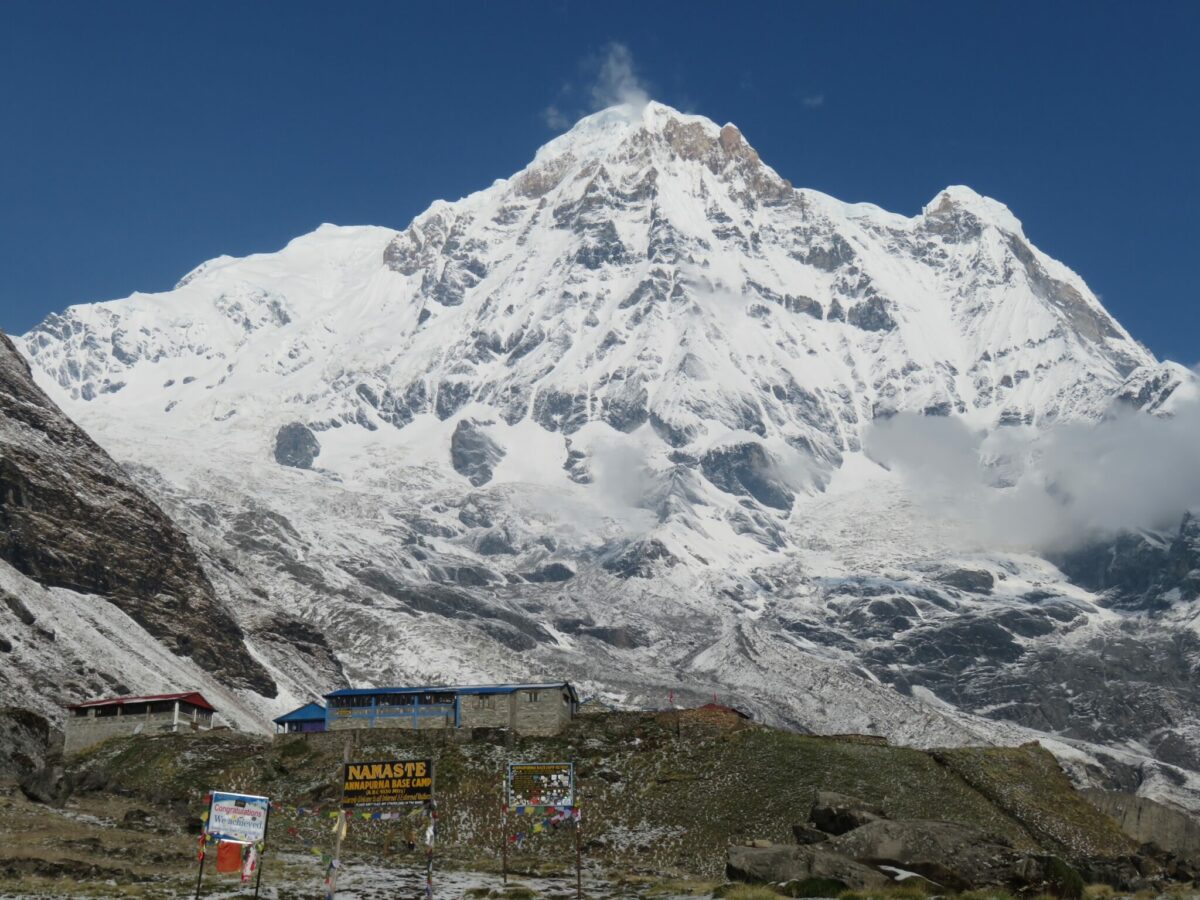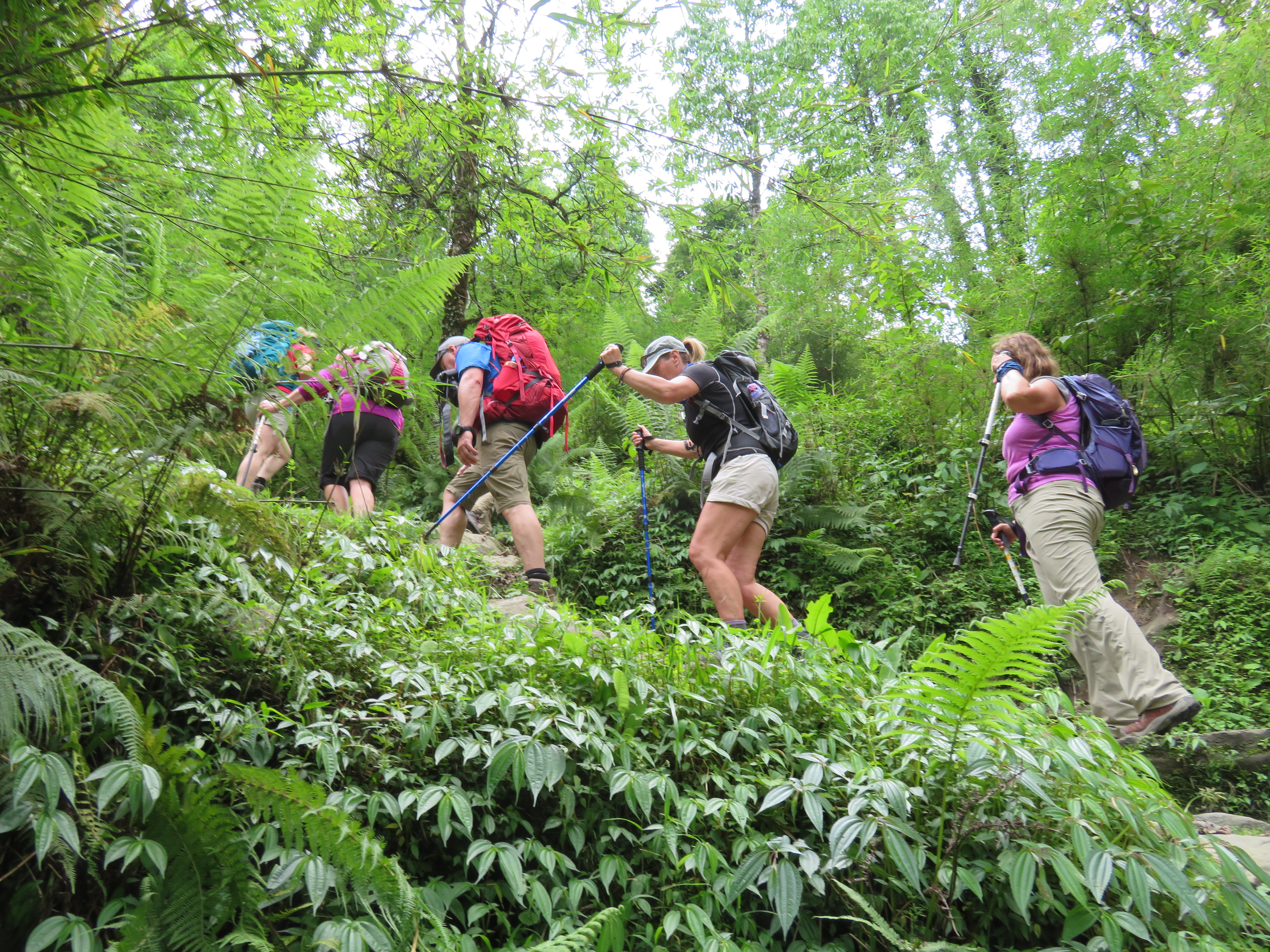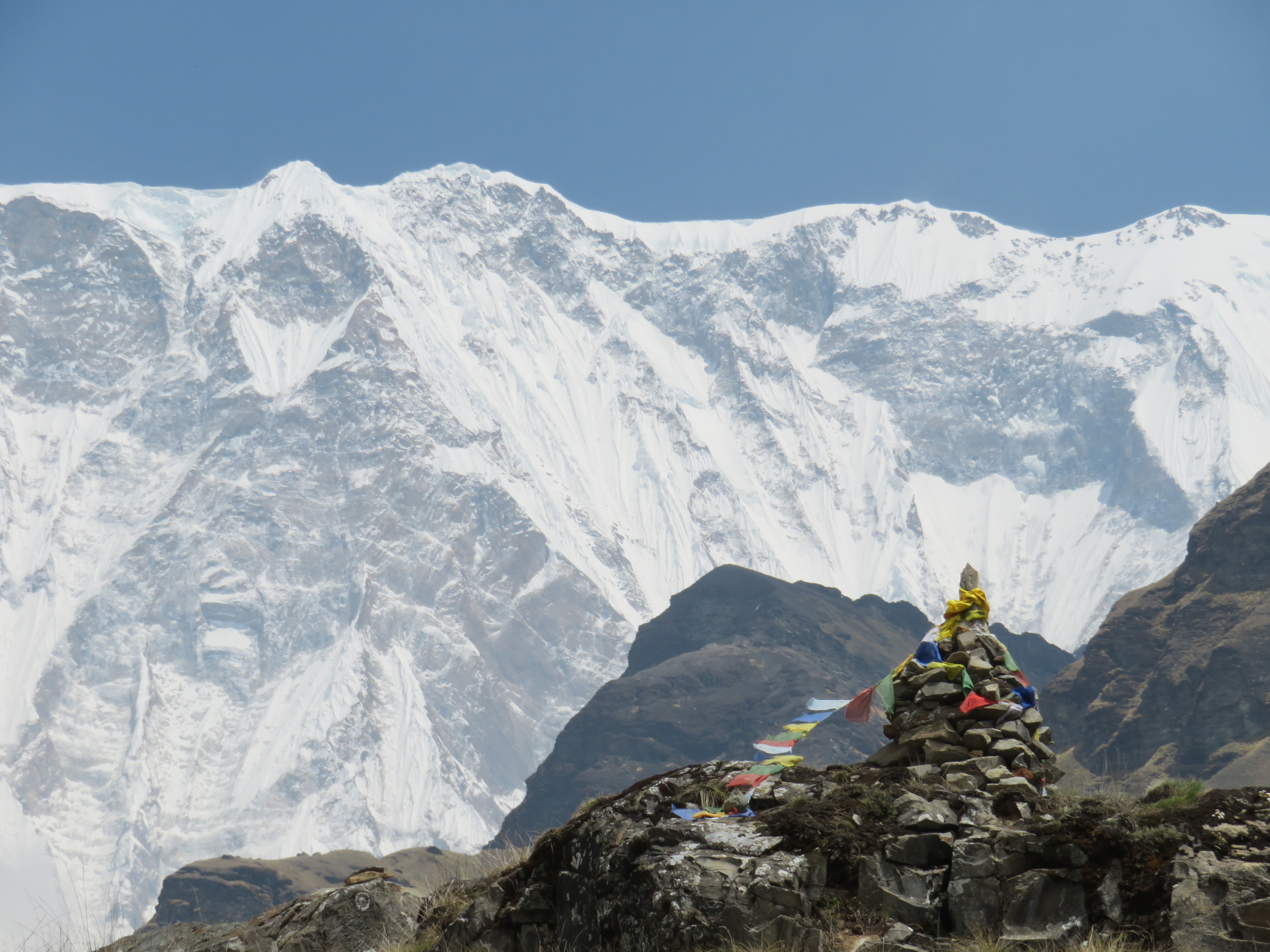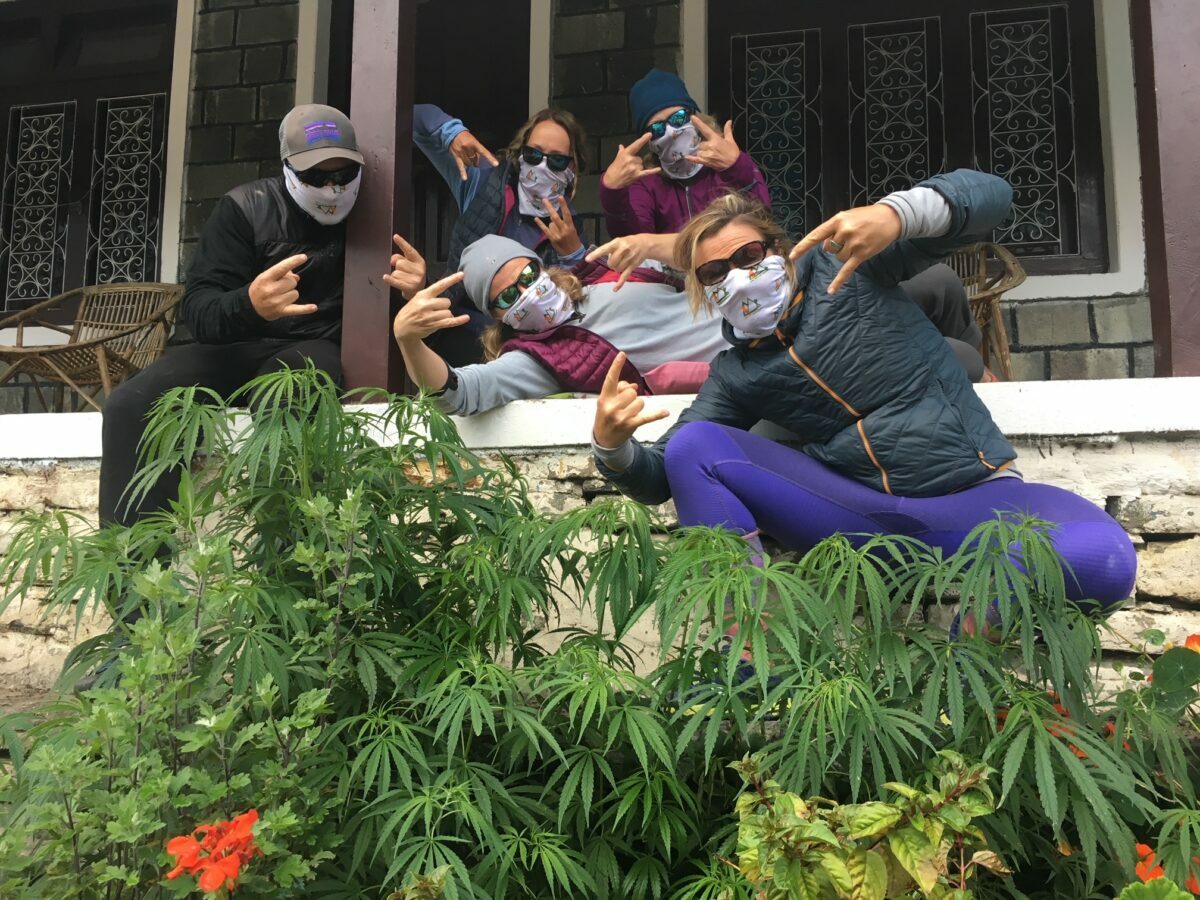Here are our Top 10 Tips for an Annapurna Base Camp Trek. We hope these tips help you have a safe, successful and enjoyable time on this beautiful trek. Visiting the base of one the world’s most dangerous mountains will definitely be the highlight of any trekking career. We have led hundreds of people to Annapurna Base Camp and Annapurna Circuit over the past 15 years. Check out our upcoming trips.
Award Winning Team
If you are planning a trek to Annapurna Base Camp? Why not join one of our treks that include the famous hike up Poon Hill!
In 2019 we won the International Tourism Award in Nepal and we have our own office in Kathmandu offering you more support for your Annapurna Base Camp Trek. We have developed a unique itinerary with 4 guides for every group of 10 trekkers. Read some reviews from our trips.
Top 10 Tips for an Annapurna Base Camp Trek
We can help you understand the training you need to put in place in order to enjoy the Annapurna trek. We run a number of Annapurna Base Camp treks per year.
These are our top 10 tips for an Annapurna Base Camp Trek. CONTACT US and sign up today. Check out our UPCOMING TRIPS for our Annapurna Base Camp treks.
Before you read our Top 10 Tips make sure your itinerary has additional nights acclimatization. This will give you the best chance at being successful, safer and having a more enjoyable experience on your Annapurna Base Camp Trek.
1). Train Before You Go
Come physically prepared. Although this trek spends minimal time at high altitude, it is a difficult trek, and requires preparation. There are thousands of stairs up and down as you make your way through this amazing mountain region. There is very little contouring.
You will go up over mountain passes and back down the other side before going back up again. If you decide to sign up to an Ian Taylor Trekking trip we will help you under the terrain and the training required for this trip.
Don’t forget to train for the downhill. Read more.
The Annapurna Base Camp Trek is a stunning walk through the world famous trail to Poon Hill and into the Annapurna Sanctuary. It is not a technical trek; you do not need to have any previous technical climbing experience or even any altitude experience to complete this trek. Read more.
Come Mountain Fit
However, you do need to be physically fit and have excellent strength, conditioning and endurance to be able to complete the trek and to fully enjoy the journey. If you have not trained your body to withstand the pressures of constant strain at altitude, then you will find it a very difficult task to complete the trek.
We recommend that you spend at least four-five days a week doing some sort of intense physical exercise for approximately six months prior to your starting date of your trek.
Train Four – Five Days Per Week
We suggest at least four days a week walking up hill on a stair-master. You should do this for one to one hour 30 minutes building up to carrying 10 kilos (22lbs) in your backpack. If possible, then adding in one day a week out in the hills or mountains.
You should aim to hike 3 to 6 hours once a week, building up to 800m/ 2,600 feet up and down. Doing as similar of an activity in your training that you will be doing on the trek is always going to be best! We cannot stress enough how important this is to your training.
Train for the Downhill
You will be building the muscle strength needed in the hills, and the muscle memory needed to complete the Annapurna trek safely. Learn more. It is important to remember you will be walking long distances day after day for 12 consecutive days.
If you do not have access to mountains or hills to train on, you can always add extra weight to your backpack and just do longer walks on the treadmill or in the gym. CONTACT US and we will help you prepare and train for this amazing adventure.
2).Mentally Prepare
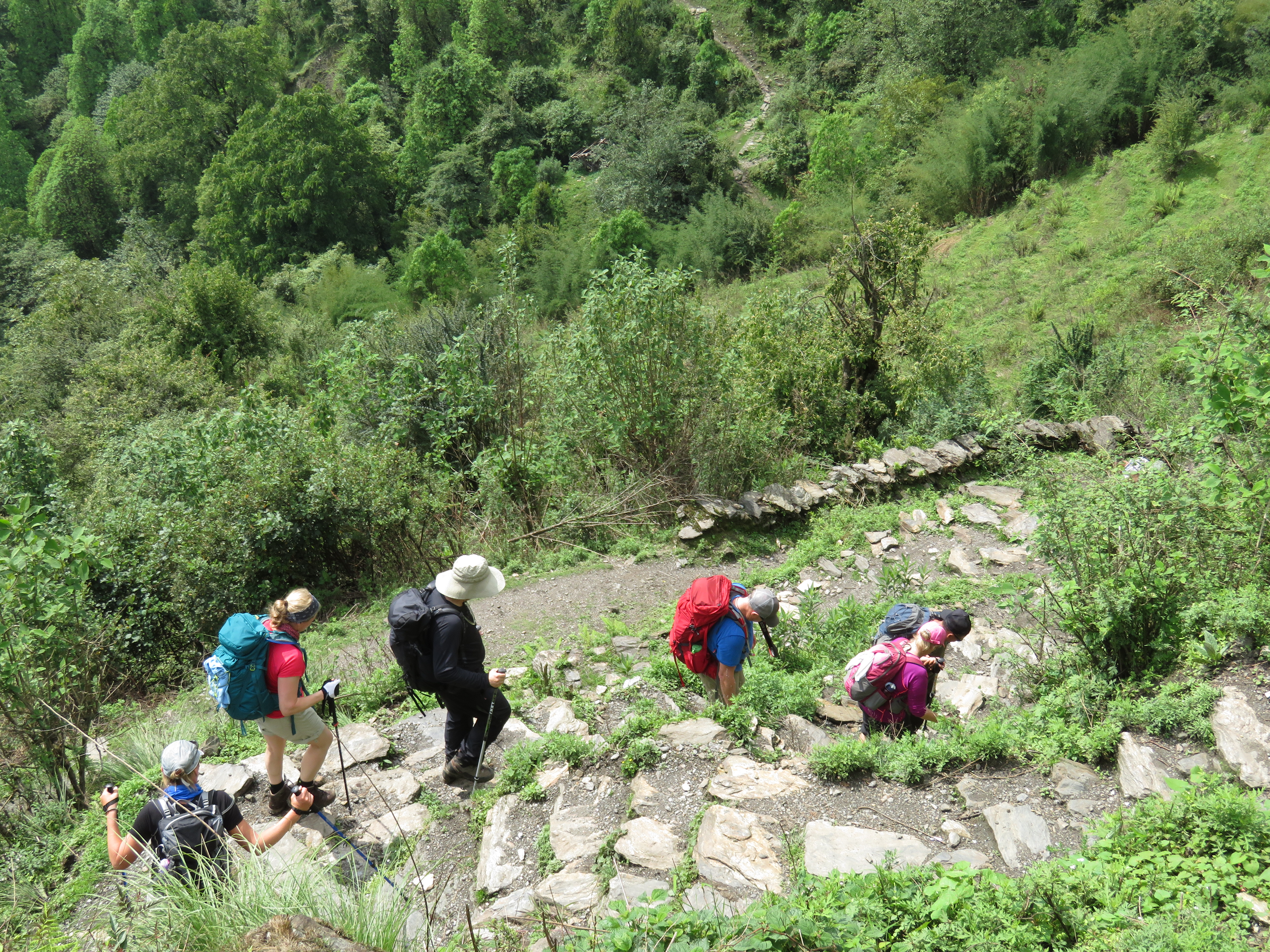
3). Get the Right Gear
There are many parts of your gear that are essential for your Annapurna Base Camp Trek. While we are not going to go through every piece of gear you need for the trip here, we are however going to highlight some of the specific pieces that are essential.
First of all, your feet are one of the most important parts of the body to take care of when trekking. Never skimp on footwear when you are going to be walking multiple hours a day, for ten days in a row. Buy a good, sturdy, waterproof pair of trekking boots and make sure that you break them in before you leave for Nepal.
Secondly, buy yourself a good down jacket that has more baffling and down in it. Fill of down is only the quality of the down. For example, 800 fill is just the quality not how warm the jacket will be.
Packing Video
You can watch this VIDEO to learn more about down jackets. Remember that every brand and style is different and if you are questioning your down coat, make sure to ask the advice of a professional before the trip as this piece of gear can be essential during the cold nights and mornings on the mountain.
Hydration, Hydration, Hydration
Thirdly, having both a platypus (ie, Camelbak brand) water carrier and a Nalgene style plastic bottle. Drinking water is essential in the mountains (See Tip #4) and we find that having a Camelbak helps you to drink more water as you do not have to stop to get the bottle out to drink, you can be sipping throughout the walk.
We also suggest to carry a Nalgene style bottle on the trip as well so that it can be filled with boiling water on cold nights to help heat your sleeping bag.
Now those few tips are obviously not the only gear you will need on the trip, but these are three essentials that we would make sure to have in your kit bag. If you sign up with Ian Taylor Trekking, then we will send you a complete Kit List and Dossier!
4. Hydration is Key
If there is one essential tip when going to altitude, it is to make sure that keeping hydrated is one of your top priorities. At higher levels of altitude, your body will dehydrate much quicker than it will at sea level.
In order to compensate, you will have to make sure you are drinking plenty of water. We recommend that you are drinking four to five liters of water throughout the day while in the mountains. This is where the different types of water bottles come in handy.
How Should You Drink Water
The goal is to drink one liter of water in the morning, before you start trekking. Then, you can fill your bladder with two liters of water for your morning trek. Finally, at lunch you can re-fill that bladder with another two liters.
This should be enough for the rest of the day! If you can follow this routine each day while in the mountains, then you will keep yourself hydrated and avoid headaches! This process of drinking five liters of water a day can be daunting to many, however, it plays an essential role in your success in the mountains.
5). Don’t be Afraid of a Little Headache
Going to altitude can be difficult for many people. It is almost inevitable that you will get some sort of headache at some stage on the trip. Learning how to manage these headaches, without letting them get worse, or ruining your trip, is very important.
One of the best ways to combat these headaches is by listening to the advice of Tip 4. Always drink plenty of water while in the mountains. One of the greatest causes of headaches in the mountains is due to dehydration. Therefore, drinking enough water can greatly help to eliminate or lessen your headaches.
Bring Ibuprofen
Another way to combat the dreaded headache at altitude is by taking ibuprofen. Ibuprofen is the proven medication to use at altitude as it is an anti-inflammatory. It releases swelling and pressure which is main reason for headaches.
These headaches are completely normal to experience at high altitude and they are not something to be too afraid of. However, if your headaches become extreme and are accompanied by another sign of altitude sickness, you may need to descend to lower altitudes for them to be relieved.
6). Slow and Steady
When taking on a challenge like the Annapurna Base Camp Trek, or any long trek/climb, you have to remember that it is a marathon, not a sprint. Acclimatization to the low levels of oxygen in the mountains requires you to take your time, to slowly get your body used to lack of oxygen.
All the research suggests, spending more time at 3,500m/ 11,500 feet is essential to going higher. This is absolutely key to your success in the mountains.
Make sure that you pick an itinerary that includes more time acclimatizing, not less. If you want to have a safe and successful trip to altitude, taking the time to acclimatize is essential.
You do not want to be on a trip that is trying to rush you up the trail quickly. This is number one reason why people are not successful.
7). Protect Yourself From the Sun
The higher you go up in altitude, the lower the levels of UV Protection you are getting. Some days on the trail, the sun can be brutal, giving you solar radiation from its powerful rays.
Staying out of the sun is not only good for minimizing those pesky wrinkles and avoiding skin cancer, but it can also improve your chance of being successful on the trek. When you get sunburned you become dehydrated.
As we have said before, dehydration at altitude is one of the main reasons people are not successful. Of course, when you are walking during the day, there may be no cover from those potent rays. However, you need to take as much care as possible to minimize those harsh emissions.
Wearing factor 30/50 sunblock, and reapplying it throughout the day is essential! The mountains are not the place to top up that holiday tan you are hoping to bring back home! Also, wearing a sun hat and long pants and sleeves will help you protect yourself from the sun.
Get yourself a light weight, brimmed sun hat. Wear this on days when the sun is shining and you will save yourself from some of the dreaded headaches you so adamantly want to avoid.
8). Bring Books and treats for our Schools in Goli
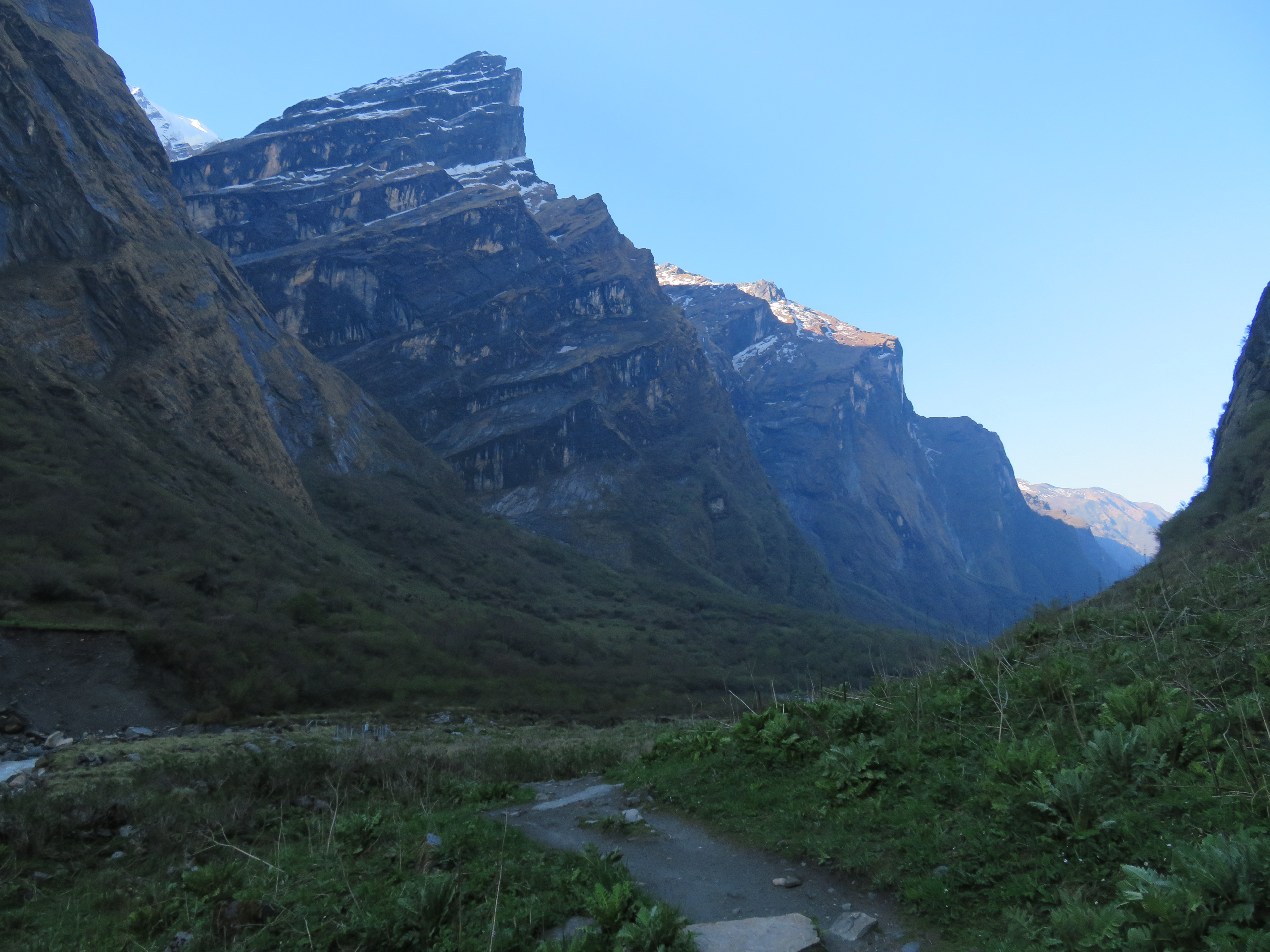
9). Acclimatization is Key
When taking on a multi-day trek, like Annapurna Base Camp, you have to remember that it is a marathon, not a sprint. Acclimatization to the low levels of oxygen in the mountains requires you to take your time.
You have to slowly get your body used to the lack of oxygen. All the research on high altitude suggests that spending more time at the critical acclimatization point of 3,500m/ 11,500 feet is essential.
All of our Annapurna Trips include a hike up to the famous Poon Hill. This takes you up to 3,200m/ 10,531 feet, which most other trips do not do.
Make sure that you pick an itinerary that includes more time acclimatizing, not less. If you want to have a safe and successful trip to altitude, taking the time to acclimatize is essential. You do not want to be on a trip that is trying to rush you up the trail quickly as this is number one reason why people are not successful.
10). Remember, you are on Holidays, Enjoy Yourself!
The most important thing to remember is that you are on vacation, relax, have an open mind, and enjoy yourself! There is always a lot of spare time when on a trekking trip like Annapurna Base Camp.
You generally walk anywhere from 4-6 hours a day, with the exception of a few longer days. Therefore, you have plenty of time when you arrive in the tea houses to relax, rest, and have a laugh with your fellow trekkers. It is important to have this time throughout your journey. It helps to keep you positive and relaxed, instead of nervous and tense.
Also, keep in mind that you are entering a very different environment than you may be used to at home. Things may not be done in the same manner in Nepal as you may be used to at home.
By no means does this imply that things are done wrong there, however they are just different. Keep an open mind. Remember, there will be cultural differences along the way and to respect those who are there to help us reach our goals!
Speak with the Experts!
These are our top 10 tips for an Annapurna Base Camp Trek! We hope that this will assist you in your planning for this once and a lifetime trek. If you are interested in our Annapurna Base Camp Trek and would like to sign up for one of our treks, then you will receive a full 40 page dossier.
This will outline all the information you need on your journey into the magical mountain region! For more information, contact us anytime at info@iantaylortrekking.com. Read some REVIEWS.

